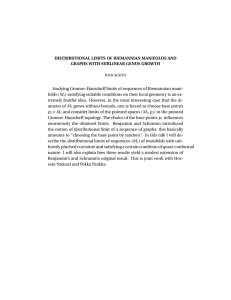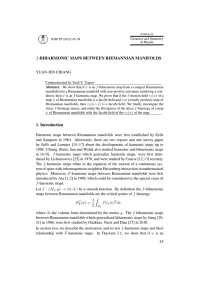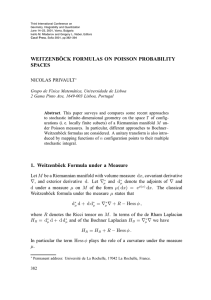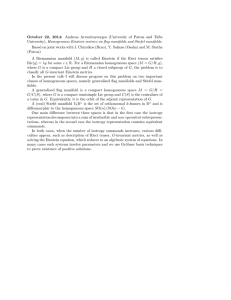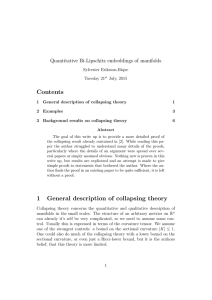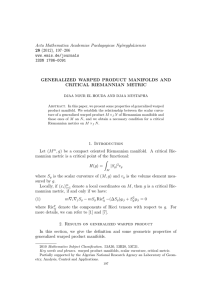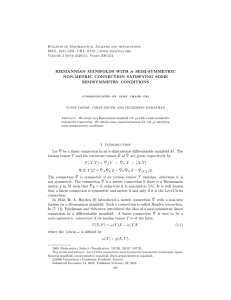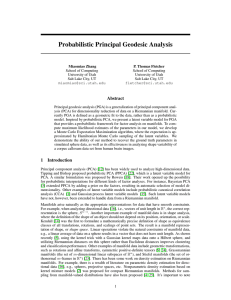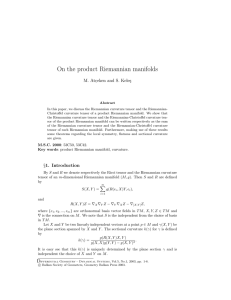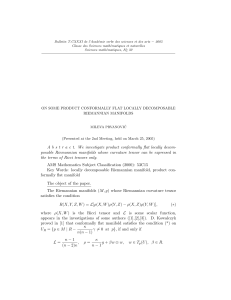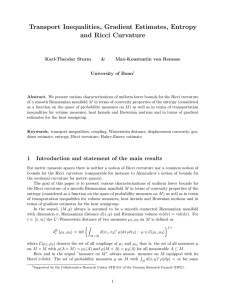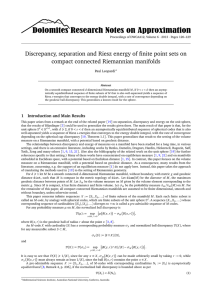DEPARTMENT of MATHEMATICS The relationship between synthetic
advertisement
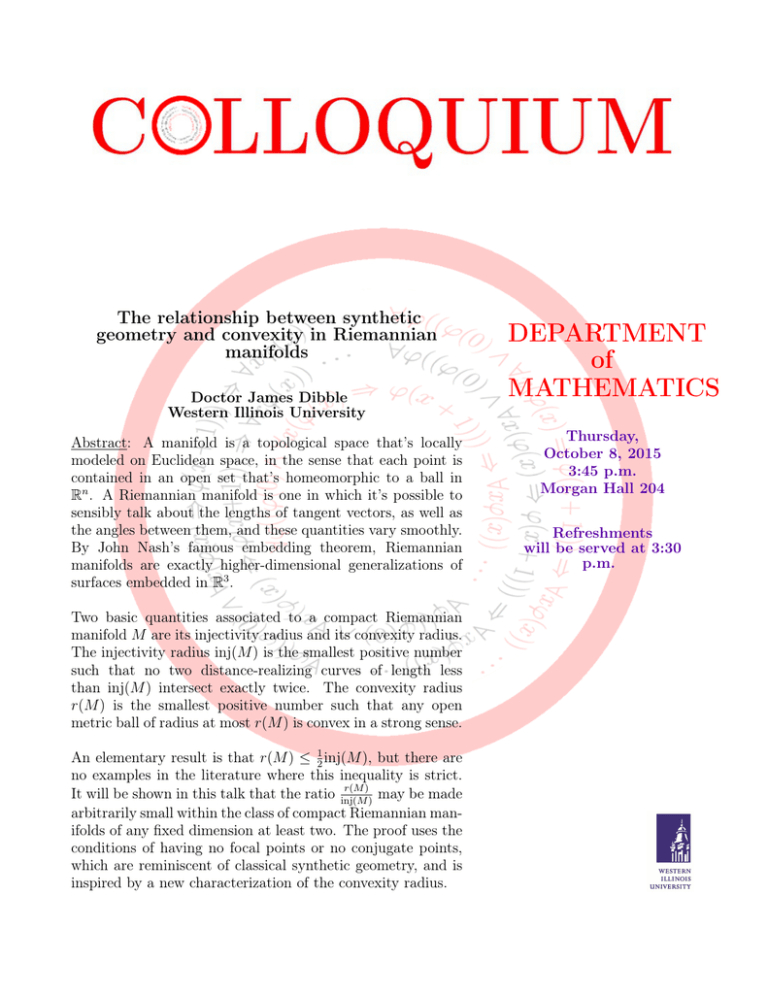
. The relationship between synthetic geometry and convexity in Riemannian manifolds Doctor James Dibble Western Illinois University Abstract: A manifold is a topological space that’s locally modeled on Euclidean space, in the sense that each point is contained in an open set that’s homeomorphic to a ball in Rn . A Riemannian manifold is one in which it’s possible to sensibly talk about the lengths of tangent vectors, as well as the angles between them, and these quantities vary smoothly. By John Nash’s famous embedding theorem, Riemannian manifolds are exactly higher-dimensional generalizations of surfaces embedded in R3 . Two basic quantities associated to a compact Riemannian manifold M are its injectivity radius and its convexity radius. The injectivity radius inj(M ) is the smallest positive number such that no two distance-realizing curves of length less than inj(M ) intersect exactly twice. The convexity radius r(M ) is the smallest positive number such that any open metric ball of radius at most r(M ) is convex in a strong sense. An elementary result is that r(M ) ≤ 21 inj(M ), but there are no examples in the literature where this inequality is strict. r(M ) It will be shown in this talk that the ratio inj(M may be made ) arbitrarily small within the class of compact Riemannian manifolds of any fixed dimension at least two. The proof uses the conditions of having no focal points or no conjugate points, which are reminiscent of classical synthetic geometry, and is inspired by a new characterization of the convexity radius. DEPARTMENT of MATHEMATICS Thursday, October 8, 2015 3:45 p.m. Morgan Hall 204 Refreshments will be served at 3:30 p.m.
